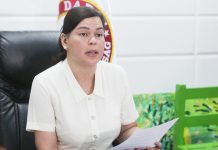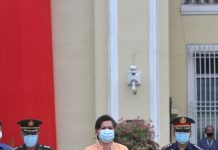Davao Oriental governor Corazon N. Malanyaon has mobilized the resources of the province to focus on healthcare, especially for the economically marginalized sector. Aside from the renovation and expansion of the Davao Oriental Provincial Hospital, the government has also expanded the membership of the poorest residents in the Philippine Health Insurance Corp., the government-run agency tasked to provide healthcare coverage, especially to the poor.
Today, the coverage has reached about 36,000 families, or 94% of the poorest of the poor in the province.
“My vision is to have all the poorest families in the province become members of the Philhealth,” Malanyaon said.
She added that the provincial government’s target is 100% coverage of the poor families in the province within the next two years. She is optimistic that the target will be realized now that the national government has already intensified its delivery of healthcare.
In his visit to the province two weeks ago to inaugurate the expanded hospital, health secretary Enrique Ona said the national government will implement major policies that will expand the membership of Philhealth. He added that the target of his agency is to institute a “zero payment” for the poorest residents, meaning that no money will be collected from them for their membership in Philhealth as it is the national government which will shoulder their premiums.
The target, Ona said, is to enrol 5.2 million families in the universal healthcare and that they will be identified through the National Household Targeting for Poverty Reduction, a project of the Department of Social Welfare and Development that identifies the poorest families.
Malanyaon explained that the provincial government has been successful with the program because other local government units, particularly the congressional districts and the municipal governments, contributed to the program. The premiums of the enrolees, she said, are shared by these government agencies, with 50% being shouldered by the provincial government itself, while the balance was equally divided between the congressional offices and the municipal governments.






